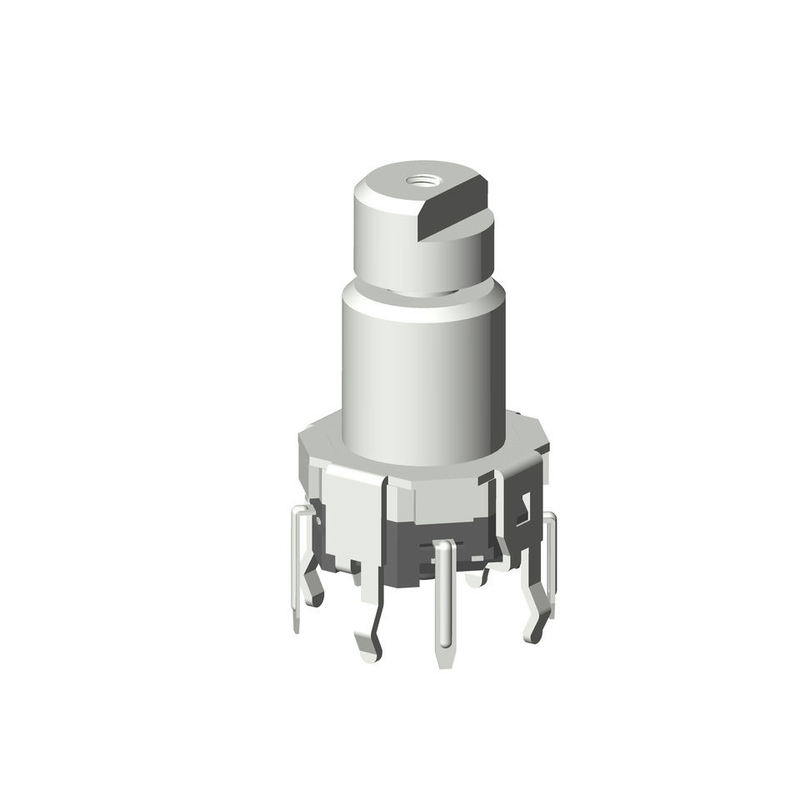



A Metal Shaft Encoder is a robust rotary sensor housed in a durable metal casing. It converts the angular position or motion of a shaft into an analog or digital electronic signal. By utilizing optical or magnetic principles, it generates precise quadrature pulses to determine parameters like speed, direction, and position. Its metal construction provides superior mechanical strength, environmental protection, and longevity. These encoders are essential in demanding industrial automation, motion control, and CNC machinery applications where high reliability and precision are critical under harsh operating conditions.
A Metal Shaft Encoder is a precision electromechanical device that converts the angular position, rotation speed, or linear motion of a metal shaft (its core mechanical component) into digital or analog electrical signals. The metal shaft—typically made of high-strength materials like stainless steel, carbon steel, or aluminum alloy—ensures durability, resistance to wear, and stability in harsh operating environments, making it ideal for industrial, automotive, and heavy-duty applications.
| Component | Material/Type | Key Function |
| Metal Shaft | Stainless steel (304/316), carbon steel, aluminum alloy | - Transmits external rotational/linear motion to the encoder’s internal structure. - Withstands high torque, vibration, and corrosion (critical for industrial use). |
| Code Disc/Scale | Optical (glass/metal with etched patterns) or Magnetic (ferromagnetic material) | - Contains precise patterns (e.g., slits for optical, magnetic poles for magnetic) that define position/speed data. |
| Sensing Element | Optical (LED + photodetector), Magnetic (Hall effect sensor), or Inductive | - Reads the pattern on the code disc/scale and converts it into electrical signals. |
| Signal Processing Circuit | Integrated circuits (ICs) | - Amplifies, filters, and converts raw sensor signals into usable digital (e.g., A, B, Z pulses) or analog outputs. |
| Housing | Aluminum, zinc alloy, or plastic (for lightweight models) | - Protects internal components from dust, moisture, and mechanical impact. |
| Bearings | Ball bearings or sleeve bearings | - Reduces friction on the metal shaft, ensuring smooth rotation and long service life. |
Here are four to six key application areas:
1. Industrial Automation & Robotics
Metal shaft encoders provide precise feedback on motor position, speed, and direction in automated machinery and robotic arms. This ensures accurate movement control for tasks like assembly, pick-and-place, and welding, enhancing production efficiency and repeatability.
2. CNC Machining & Metalworking
In CNC lathes, milling machines, and grinders, these encoders deliver critical position data for tool and workpiece control. Their robust metal construction withstands harsh machining environments with coolant, metal chips, and vibration, guaranteeing high-precision manufacturing.
3. Motion Control Systems
Used in servo motors and actuators, metal encoders enable closed-loop control for precise velocity and torque regulation. This is vital in applications ranging from packaging equipment to textile machinery, where consistent motion profiles are required.
4. Aerospace & Defense
The high reliability and ability to operate in extreme conditions make metal shaft encoders suitable for aerospace applications. They are used in flight control systems, antenna positioning, and military vehicle navigation, where failure is not an option.
5. Automotive & Transportation
In automotive systems, these encoders monitor throttle position, steering angle, and transmission speed. Their durability ensures long-term performance under temperature fluctuations and mechanical stress, contributing to vehicle safety and efficiency.
6. Medical Equipment
High-precision medical devices, such as surgical robots, imaging systems (CT/MRI), and infusion pumps, utilize metal shaft encoders for accurate positioning and dosage control. Their precision is critical for patient safety and treatment efficacy.
Encoder is a kind of precision electronic components, is widely used in various fields, can be used to measure the speed, angle, distance, displacement and so on, in the process of our use, the encoder will sometimes occur some faults, summed up some of the causes of encoder failure and the solution for your reference!
1. Faulty encoder itself
2. Faulty encoder connection cable
3. Encoder +5V power supply voltage drop
4. Absolute encoder battery voltage drop
5. the encoder cable shield is not connected or off
6.Loose encoder installation
7. grating pollution This will make the signal output amplitude drop, must use degreasing cotton dipped in anhydrous alcohol to gently wipe off the oil.
Previous: Encoder Shaft
Next: Through-Axis Encoders

Tel:
Add:
Rixing Industrial Zone,Tangxia Town, Dongguan City, Guangdong Province, China
Copyright © 2025 KKG ELECTRONICS ELECTRIC Co., LTD. All rights reserved
Privacy policy Cookie tracking